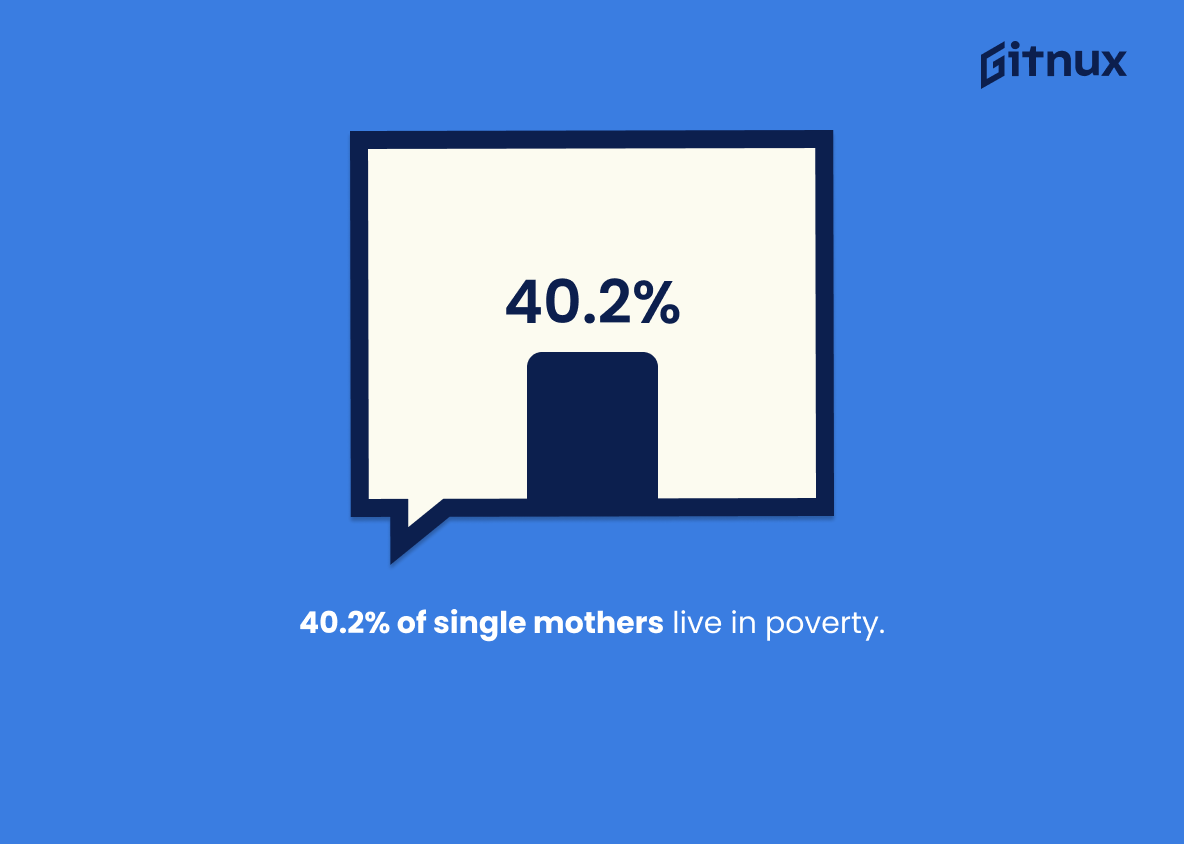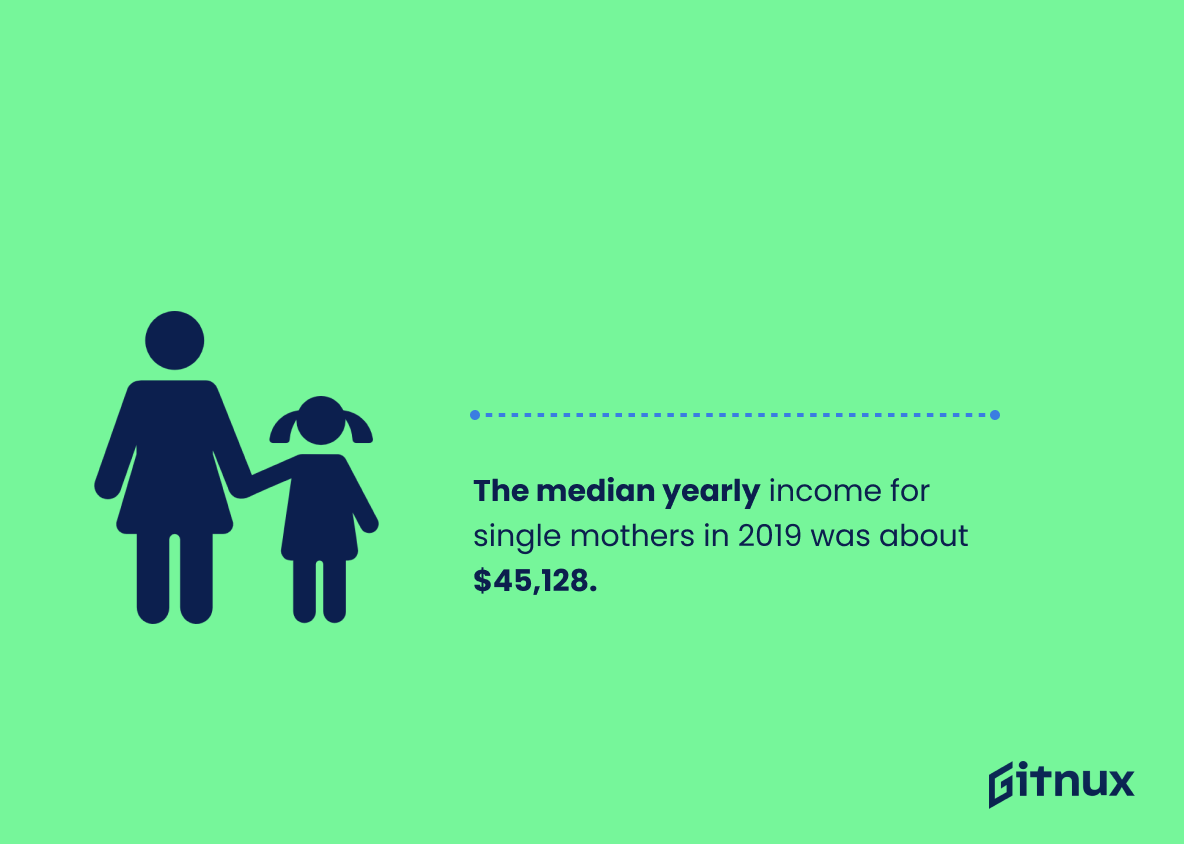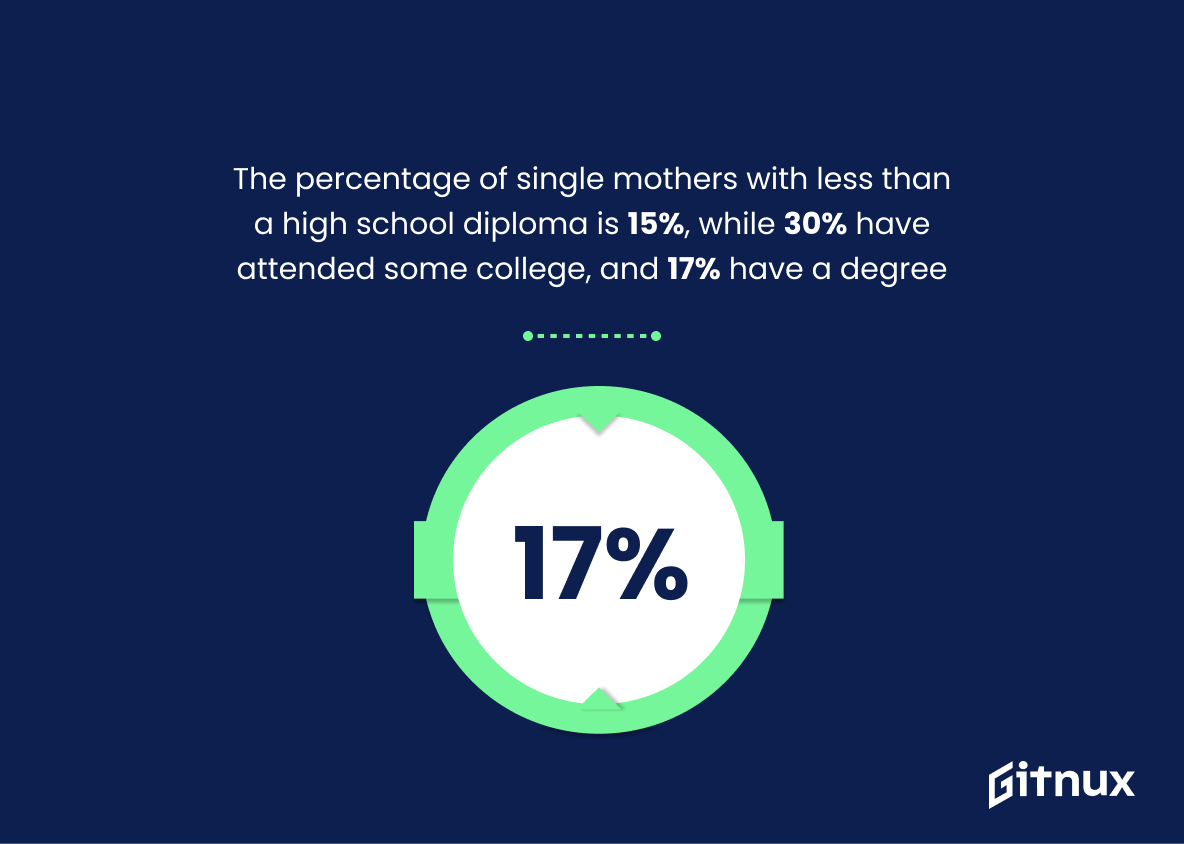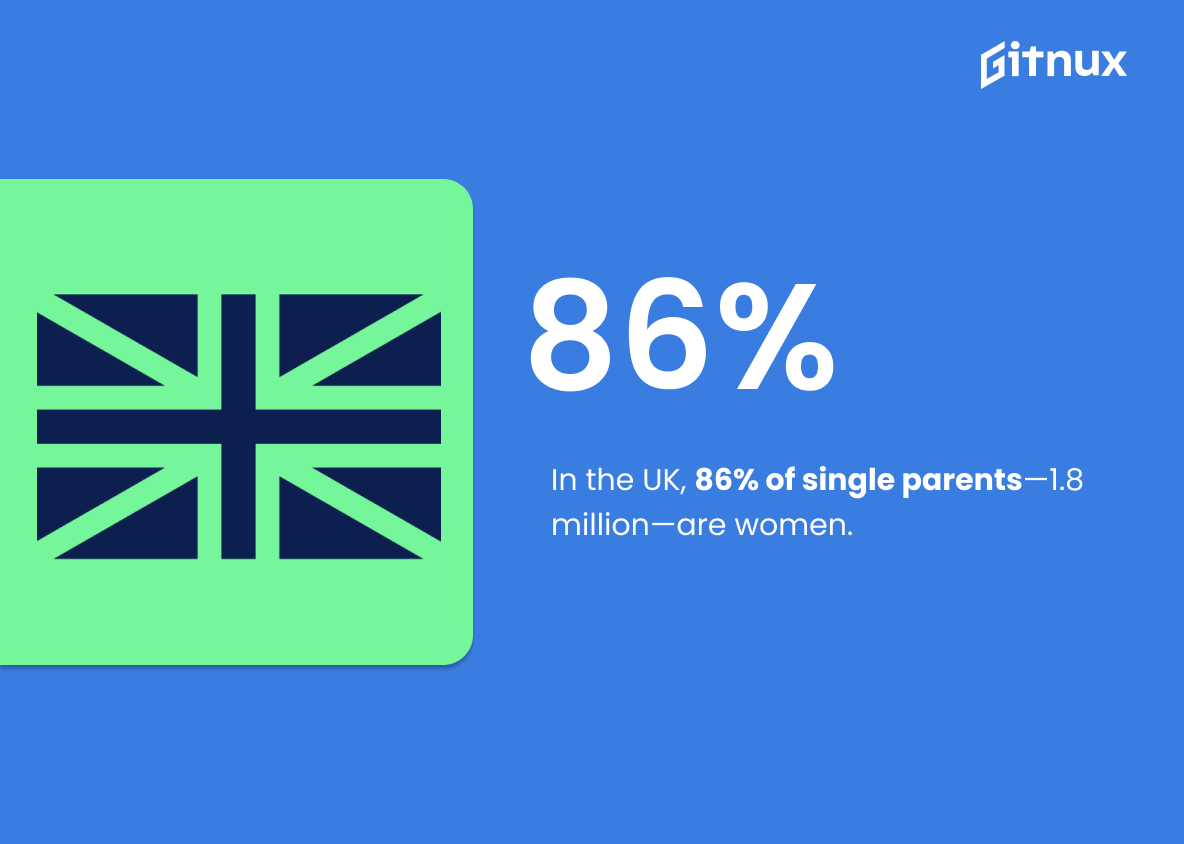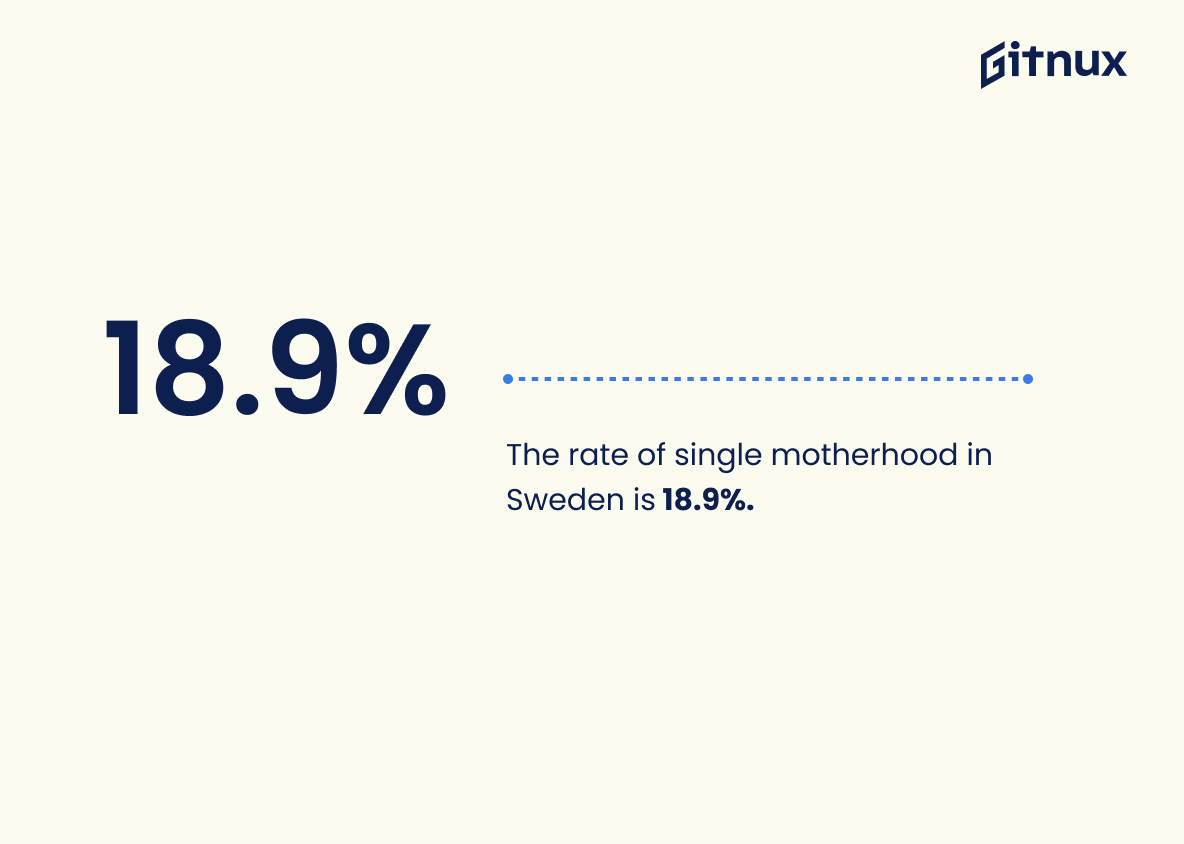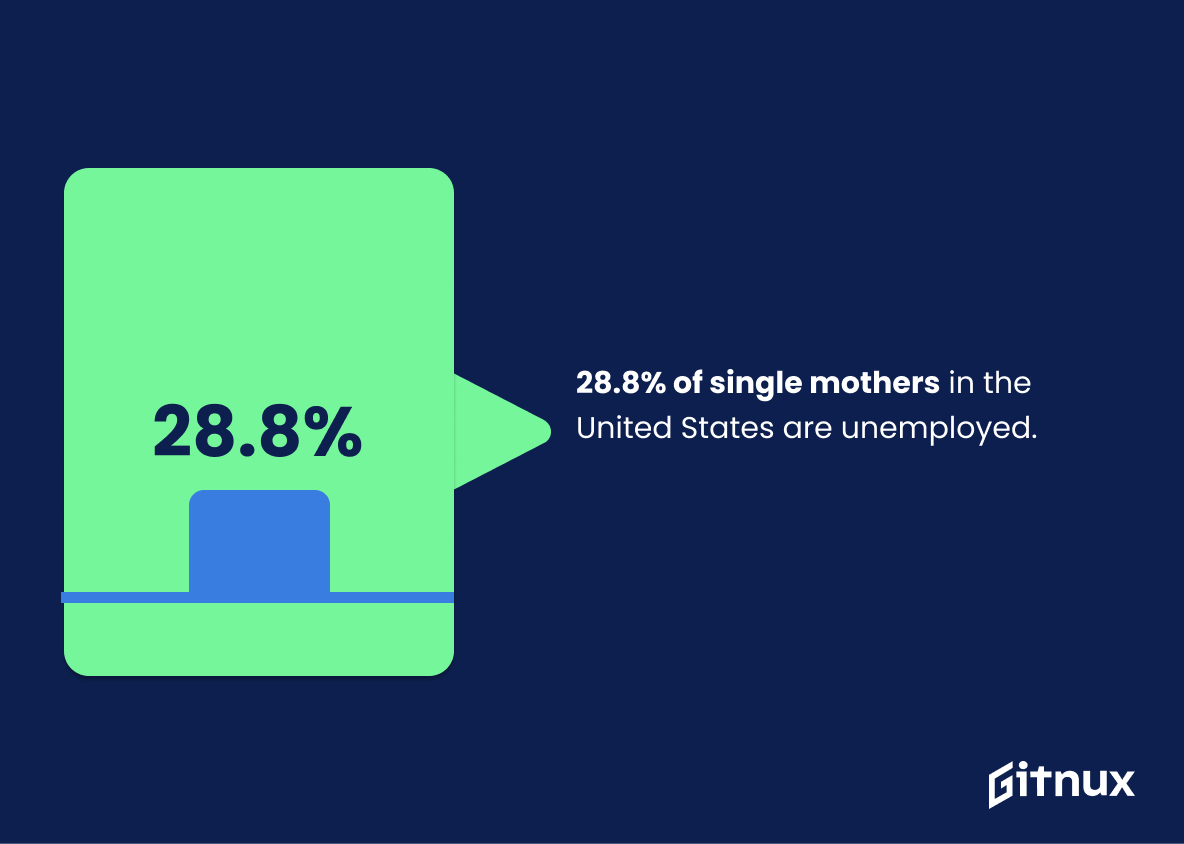Navigating through the maze of life as a single mother presents a unique blend of challenges and triumphs. Single mothers are unsung heroes, often juggling the demands of work, child rearing, and personal growth. This blog post will delve into the undeniable reality of single mothers, spotlighting relevant statistics that paint an authentic picture of their experiences.
Sit tight as we take this fact-finding journey, where the numbers speak the unfiltered truth about single motherhood. We promise, after reading this, you’ll have a renewed respect for these strong, unwavering women who singlehandedly shape the future of their home and the world at large.
The Latest Single Mother Statistics Unveiled
Approximately one quarter of households in the U.S. are headed by a single parent, with single mothers accounting for the majority at 80.4%.
Diving into the heart of this statistic leads us to the startling realization that in the vast expanse of the U.S. landscape, the blueprint of the typical household is transforming. Imagine stepping into any four homes, and in one of them, you’ll find a heroic single parent taking the reins, steering their family towards the future. Now, hone in further. It’s not just any single parent; it’s predominantly a single mother. At an imposing 80.4%, the terrain of single parenthood in the U.S. is dominated by mothers -a testament to their strength, resilience, and independence.
Illuminating these facts helps to uncover the changing structures of families in the U.S., underscore the importance of support systems for single mothers, and compels us to revise our understanding, policy, and societal mindset around parenthood and child-rearing. In essence, this statistic uncovers a narrative that’s powerful, compelling, and undeniably important to address when examining the dynamics of single motherhood in the U.S.
40.2% of single mothers live in poverty.
Highlighting the figure of 40.2% of single mothers living in poverty captures a critical facet of the unique challenges encountered by this demographic. It casts a much-needed spotlight on their economic hardships, drawing the readers’ attention to the stark reality that well over a third of these women are struggling to meet basic necessities.
As such, it underscores the urgency and importance of policies and solutions aimed at addressing this economic distress. Furthermore, this statistic also serves as a conversation starter, prompting dialogue and reflection on the underlying causes and potential remedies for such a substantial poverty rate among single mothers. Thus, within the body of a blog post about Single Mother Statistics, it resonates deeply, serving as a potent reminder of the issues that need tackling to improve the lives of single mothers.
The median yearly income for single mothers in 2019 was about $45,128.
In the rich tapestry of Single Mother Statistics, a stand-out thread is the median yearly income, which, for 2019, hovered around $45,128. This figure is particularly revealing, not only as a snapshot of economic stability for single mothers, but also as a benchmark for assessing their financial health and opportunities for upward mobility.
It calls us to delve further into factors such as working conditions, wage disparities, and access to financial resources that surround single mothers. Hence, this annual income figure, atop all it represents, is a critical foundation stone in our exploration and understanding of the single mother narrative.
49% of single mothers have never been married.
Peering through the lens of single motherhood paints a dynamic portrait of diversity, curiosity sparking at an intriguing facet- nearly half (49%) of these single mothers have never exchanged nuptial vows. This statistic unclothes an insightful narrative suggesting that the traditional family trajectory is no longer the solitary norm.
It further provokes discussion on societal norms, potential economic and emotional challenges, policy implications, access to resources, and societal support systems for single mothers. Not only does it call forth recognition of the changing cultural landscapes, but it also instigates a dialogue on how these shifts impact the wellbeing of single mothers and their children.
The percentage of single mothers with less than a high school diploma is 15%, while 30% have attended some college, and 17% have a college degree or higher.
In shedding light on the landscape of educational attainment among single mothers, this particular statistic serves as a vibrant lens, illustrating the pathways and potential hurdles that these mothers face. It encapsulates key understandings that can be acknowledged within a blog post about Single Mother Statistics.
Unveiling that 15% of single mothers have less than a high school diploma uncovers potential limitations in their capacity to access high-paying jobs, thus imposing potential economic stress. Conversely, affirming that 30% have experienced some college education, while 17% own a college degree or higher, indicates a remarkable resilience, perseverance and commitment to upward mobility, despite their circumstances. These illuminating insights form an essential backdrop to discussions putting focus on the importance of supporting single mothers in their educational pursuits for improving their situations.
In the UK, 86.5% of single parents—1.8 million—are women.
Unraveling the thread of single mother statistics, an eye-opening insight reveals itself—that in the UK, over four-fifths (or 86.5%) of these valiant warriors of single parenthood, totaling 1.8 million, are in fact, women. This figure is not just another number, rather it magnifies the breathtaking magnitude and the deeply-rooted narrative of female strength and resilience shaping the single-parent landscape in the UK.
This revelation accentuates the imperative need to support and empower this monumental group of individuals. Amid juggling multiple responsibilities that parenthood brings, these women strive for their children’s well-being, often against considerable odds. Thus, these figures help underscore the vital narratives of struggle, courage, and determination encapsulated in single motherhood statistics.
In Canada, 19.2% of all families are headed by a single mother.
Shining a light on this numerical revelation unveils that almost a fifth of all families in Canada are orchestrated by the relentless efforts of a single mother. This depiction of data is of paramount importance to the narrative about Single Mother Statistics, not merely as an isolated number. Rather, it stands as a testament to the emerging societal structure where single moms are at the forefront.
The shift from traditional to these modern family units underscores the resilience and strength of motherhood in the face of adversity. Hence, in our blog post, this statistic serves as a powerful acknowledgement of single mothers, their rise, their challenges, and their triumphant march forward.
The rate of single motherhood in Sweden is 18.9%.
Diving into the sea of the single mother statistics, one cannot help but notice the distinctive wave marking 18.9% – the current rate of single motherhood in Sweden. Truly, this number carries a significant weight and relevance. As we navigate through the vast expanse of our discussion on single mother statistics, this specific percentage sets the Swedish context as an interesting reference point.
It offers our readers a global perspective – a chance to map out the varied landscapes of single motherhood across different societies. Moreover, it allows us to examine the social, economic, and policy implications intrinsic to the Scandinavian region, which is renowned for its advanced welfare system and gender equality. Therefore, 18.9% isn’t just a dry, detached number—it’s a pulsating, pivotal part of our conversation around single motherhood.
28.8% of single mothers in the United States are unemployed.
Unveiling the stark reality hidden behind the figure, 28.8% of single mothers in the United States are unemployed, uncovers a critical socio-economic concern. This number not only reflects the degree of the economic obstacles these courageous women face but also forms an integral part of understanding their struggles. The implications of such a high percentage are deep, affecting the financial security, mental health, and overall quality of life of these mothers and their children.
The statistic serves as an urgent call to action towards policy changes aiming at easier job placements and various supports for single mothers. In a larger sense, this statistic highlights the intersectionality of gender, family structure, and economic status in our society.
Approximately 18.8% of single mothers suffer from depression-Episode Lifetime in the USA.
Diving into the heart of this critical statistic reveals a potent proclamation: an estimated 18.8% of single mothers grapple with lifetime depression episodes. It acts as a bellwether, drawing our attention to an often overlooked plight experienced by a significant portion of single mothers in the USA. This handful of percentages forms a resounding wake-up call, urging us to explore mental health concerns within this demographic more deeply.
In a blog focusing on single mother statistics, this fact unearths vital insights about the crossover between single parenthood and mental health issues. A stark reminder about the intertwining of socio-economic factors and mental well-being, the statistic beckons a call to action. A journey down this statistical rabbit hole could spark vital conversations about support systems, resources, and societal changes that can lighten the burden on single mothers, reducing the prevalence of depression.
Essentially, this figure doesn’t just add weight to our blog post; it helps to lay the foundation for a depth of understanding and empathy toward the challenges faced by single mothers. Ultimately, it serves as a beacon to navigate deeper into the conversation about the psychological welfare of this significant demographic.
Single mothers run 25.2% of American households.
Delving into the realm of single mother statistics, we find a nugget that is as riveting as it is informative. As we navigate the labyrinth of American households, it becomes evident that the landscape is significantly coloured by single mothers. Astoundingly, they are the captains of the ship in 25.2% of American households.
This numeric revelation is not just about percentages, it is a testament to the resilience and strength of single mothers, who are holding the reins of a quarter of American homes. It underscores the necessity to understand and support this substantial demographic, their struggles, their triumphs, and their unique journeys. This data point further demonstrates an underlying societal shift and provides important context on family dynamics, childcare, income struggles, and policy implications that emanate in our society.
Indeed, these aren’t just numbers – they are the pulse of a pivotal component of America’s households, beating steadily at 25.2%. Hence, any dialogue, analysis, or solution relating to single mothers and their challenges, would fundamentally be incomplete without comprehending this crucial statistic.
67.4% of single mothers are White, 24.7% are Black, 21.7% are Hispanic or Latino, 7.5% are Asian, and 3.9% are of other races.
Understanding the diversity within single mother demographics paints a clearer picture of the challenges and experiences they face. Delineated by racial and ethnic categorizations, the figures tell an intriguing story. The given statistic indicates that a significant 67.4% of single mothers are white, hinting toward systemic or cultural factors influencing this prevalence. On the other hand, Black, Hispanic or Latino, Asian, and other races constitute a sizeable 57.8%, providing valuable insights into the multicultural essence of the single mother demographic.
These figures don’t just serve as mere numerical representations but rather as sign-posts directing us towards societal factors that might be influencing the trend. By unmasking the racial affiliations, it opens up discussions about the varied support systems, financial abilities, employment rates, and even societal prejudices that different races face. Quite literally, these numbers foster a comprehensive analysis, giving depth to discussions about single motherhood, race, and society overall.
Over half (56.2%) of young children in single mother families were enrolled in child care.
Diving into the life of single mothers, one can’t help but notice the distinct narrative revealed by the statistic that 56.2% of their young children are enrolled in child care. This statistic helps to uniquely unmask the complexities of single motherhood, illustrating the careful balance between parent-child time and the reality of work and life obligations.
Firstly, this information paints a picture of the daily struggles single mothers endure to pursue job opportunities while ensuring their children’s well-being. By relying on child care services, they circumnavigate childcare-related barriers that could otherwise limit their professional aspirations.
Moreover, it underscores the pressing need for affordable and quality child care facilities to support the largest significant proportion of single-parent families—those led by mothers. It is a call to action for policymakers and stakeholders to address the social and economic issues that these families face daily.
Finally, this statistic provides food for thought for those advocating family-friendly workplaces. With over half of single mom families making use of child care, there is a strong argument for more organizations to embrace flexible schedules and child-friendly policies. All in all, this statistic carries a weight of significance for all involved in the conversation about single motherhood.
Conclusion
Single motherhood is an important topic that’s surrounded by a wealth of statistics. Though the challenges they face are undoubted, the resilience of these women is inspiring and highlights the strength of the human spirit. Statistics shed light on their struggles, their victories, their needs and their place in society.
Behind every statistic is a story of a strong woman juggling parental duties while striving for a better future, for herself and her children. Society’s understanding and support, molded by these statistics, can further empower single mothers, helping them overcome hurdles to make significant contributions to our society.
References
0. – https://www.www.census.gov
1. – https://www.www.ons.gov.uk
2. – https://www.www.ncbi.nlm.nih.gov
3. – https://www.www.pewresearch.org
4. – https://www.www.scb.se
5. – https://www.www.bls.gov
6. – https://www.www150.statcan.gc.ca
7. – https://www.www.pewsocialtrends.org
8. – https://www.www.childtrends.org
9. – https://www.datacenter.kidscount.org
10. – https://www.singlemotherguide.com

